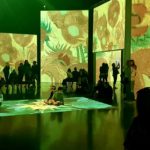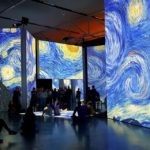Gathering Data through All Our Senses
“The senses, being the explorers of the world, open the way to knowledge.” Maria Montessori
A necessary disposition for students to develop is to gather information through the senses. The senses collect information about the world and send it to the brain, and the brain uses this information to make sense of the world. Sensory receptors take in information automatically, unconscious and simultaneously. It is interesting to note when one sensory pathway is blocked or inhibited, the other senses are heightened.
There are two main sensory pathways. External and internal. All external information comes into the brain through sensory pathways. External pathways include:
- Visual, sights coming in through the eyes
- Auditory sounds coming in through the ears
- Kinesthetic, movement and posture of the body
- Touch, the sensation felt through the skin
- Gustatory, the sense of taste in the mouth
- Olfactory, the smells inhaled through the nose
Inner senses include pain, balance, thirst and hunger. These provide the brain information about the body and its needs. For example, the purpose of thirst is the body’s way of telling the brain it needs hydrating.
Intelligent people observe the world. They use their senses to explore their surroundings and collect information or data through various pathways. Much of language comes from being open and observant to our environment from the senses. It is when people learn about textures, colours, patterns, sounds, tone, volume and so on.
In his book Brain Rules, Dr John Medina shares research showing that students who are learning in a multi-sensory environment always do better than those in a uni-sensory environment. Naturally, a skill needs to be taught and experienced in the manner of its execution. For instance, riding a bike is predominately a body, kinesthetic skill. Simply watching bike riding videos and having someone demonstrate the riding techniques (mainly visual inputs) will not replace the authentic learning of physically getting on the bike.
Prof. Art Costa and Dr Bena Kallick, the founders of the Habits of Mind, say, “To know a wine it must be drunk; to know a role it must be acted; to know a game it must be played; to know a dance it must be moved; to know a goal it must be envisioned.”
As memory is stored in neutral circuits all over the brain, the more stimulus and input from different sensory pathways, the easier recall will be and the longer a memory lasts. Bob Bourgault, Director of the Almond Acres Charter Academy, encourages teachers and students to be a ‘sense-ational’ thinker and involve as many senses as appropriate and possible. Evidence suggests that problem solvers come up with fifty percent more creative solutions when engaging their senses.
This is evident in many different professions. Scientists often use scenarios and roleplaying to think through ideas. They build models to help them understand complex concepts and problems. Mechanics use hands-on experimentation to see what works or doesn’t work. Artists experiment with colour and textures, while musicians experiment with combinations of vocals, instruments, timing, volume and pitch.

 Visiting the Van Gogh Alive Exhibition in Wellington, NZ, recently was a unique multi-sensory experience. Whist I appreciate great art, it has not been my thing to visit art galleries. This, however, was an incredible feast for the senses. Digital simultaneous projection of paintings on giant screens, orchestral music, wafts of aromas to coincide with café scenes, Van Gogh quotes on a screen and the story of his life being shown through his art. It was an enthralling and fulfilling experience. I watched it twice and would have stayed for a third if an appointment time was not getting closer. I concluded that all art should be shown this way!
Visiting the Van Gogh Alive Exhibition in Wellington, NZ, recently was a unique multi-sensory experience. Whist I appreciate great art, it has not been my thing to visit art galleries. This, however, was an incredible feast for the senses. Digital simultaneous projection of paintings on giant screens, orchestral music, wafts of aromas to coincide with café scenes, Van Gogh quotes on a screen and the story of his life being shown through his art. It was an enthralling and fulfilling experience. I watched it twice and would have stayed for a third if an appointment time was not getting closer. I concluded that all art should be shown this way!
A few ways to develop this disposition include:
- Teach students about their brain learns, stores, and retrieves information.
- Provide students with a rich multi-sensory environment and experiences to enhance their learning and memory recall.
- Talk about experiences and invite students to describe their learning through the senses. Ask, “what did you hear, see, smell, feel, touch and taste?” Language and questioning are often the glue to enhancing the senses.
- Offer multi-sensory activities for young children (where appropriate), using playdough with glitter and aromatherapy oils, using feely boxes, and a sandbox for printing.
- As students get older, combine sensory experiences with classwork. This might include playing quiet orchestral music while they are doing math problems or encouraging them to write stories using colour pens or pencils.
- Invite students to use a multi-sensory platform when sharing their work and learnings.
- When students are writing, encourage them to consider the visual setting, smells, and how people feel to give a more profound richness for the reader. To paint a picture through their words.
- In science, actively promote the use of the senses to expand observation skills.
In what others ways might you help students experience the world through as many different avenues as possible?
Tags: Habits of Mind, Karen Boyes, Karen Tui Boyes, Senses
Published on Wednesday, April 28th, 2021, under Habits of Mind

Thanks for writing this! I’m planning to share with some folks just getting started with HOM. Pat
Thanks Pat :-). I have further articles on the HOM at https://karentuiboyes.com/category/habits-of-mind/
Let me know how I can assist you further on your HOM journey.
Rainbows and sunshine
Karen